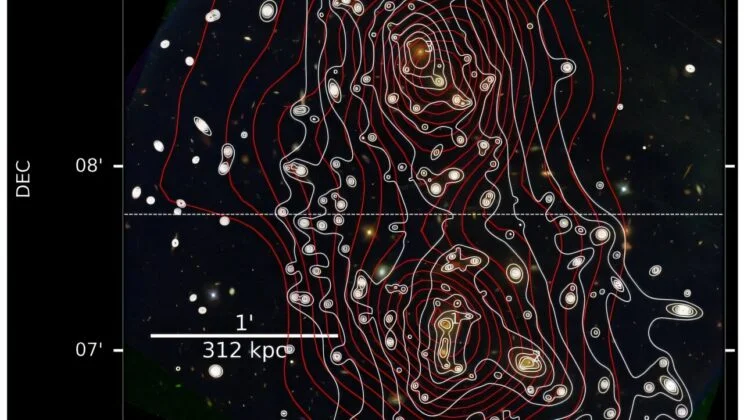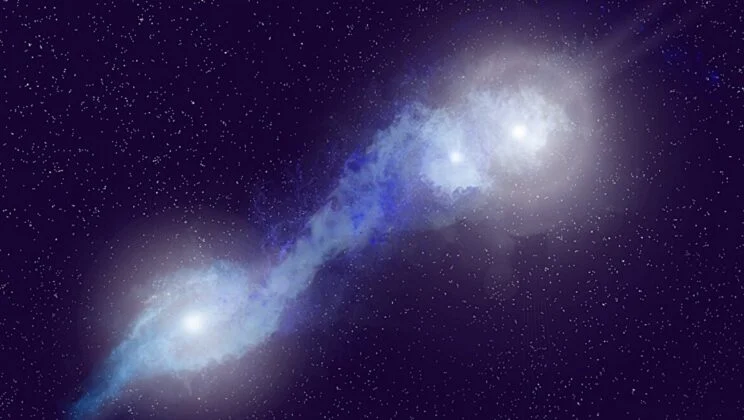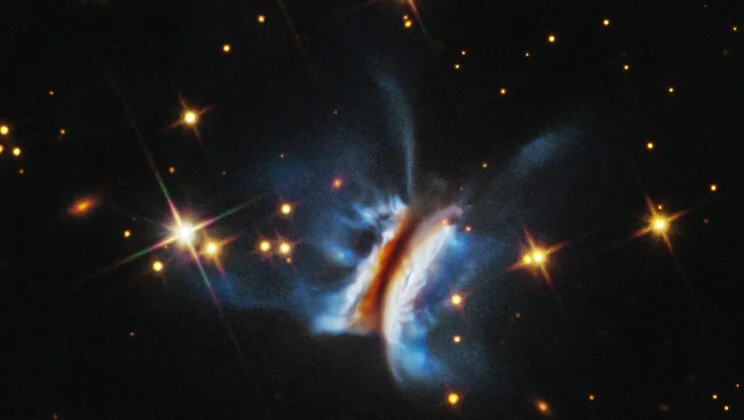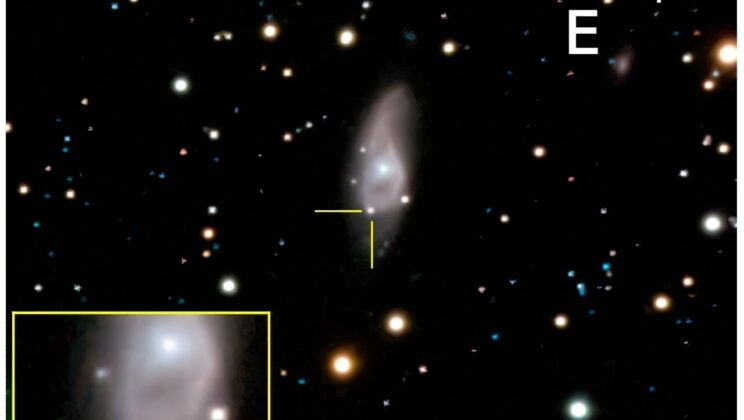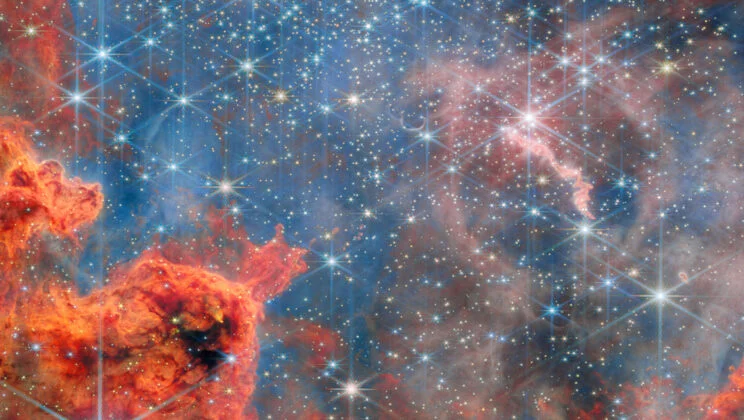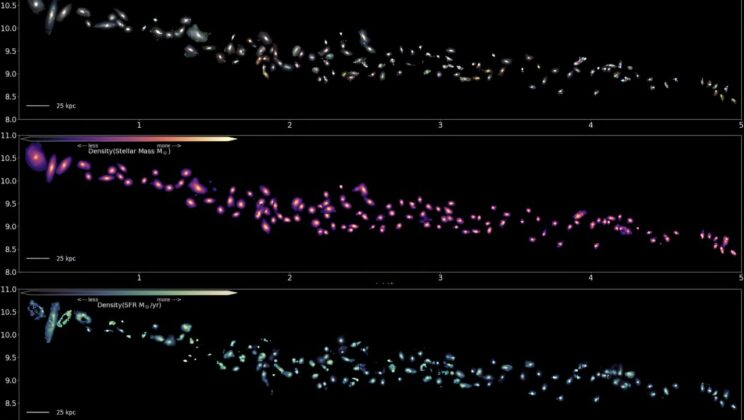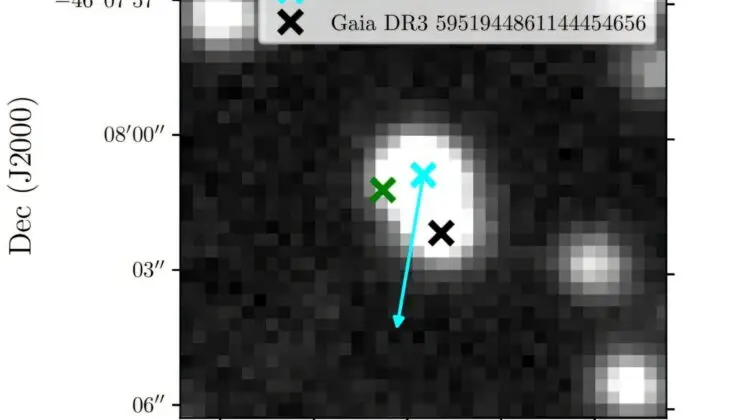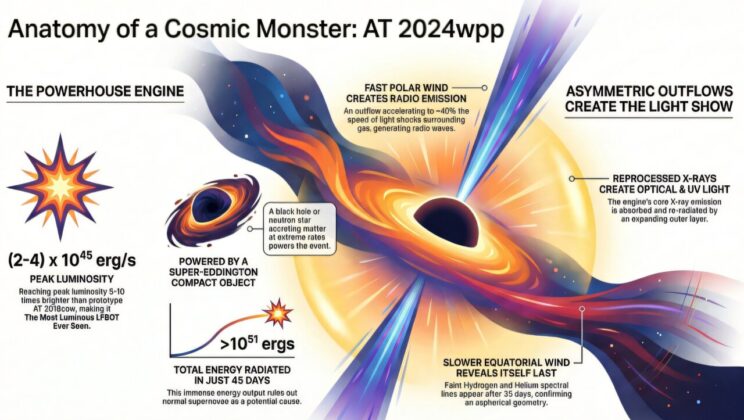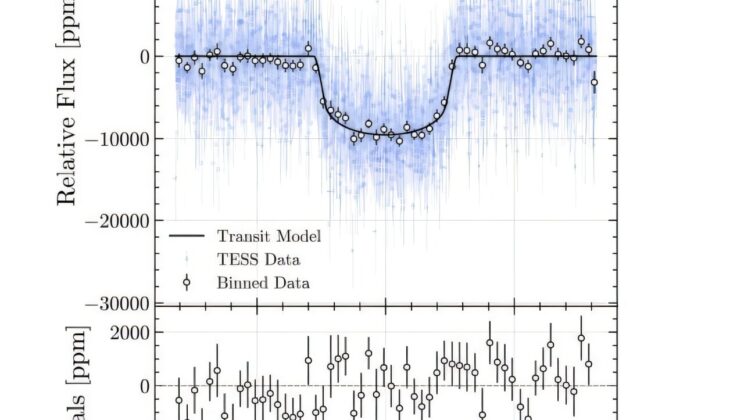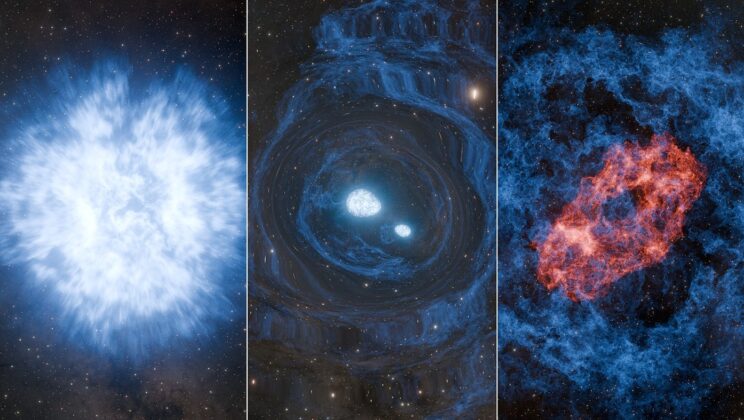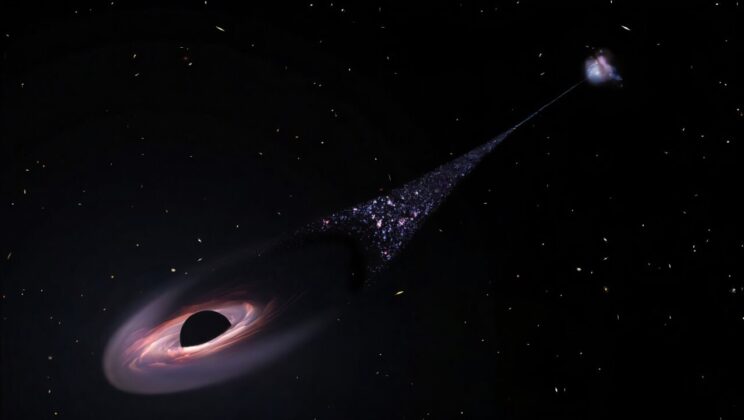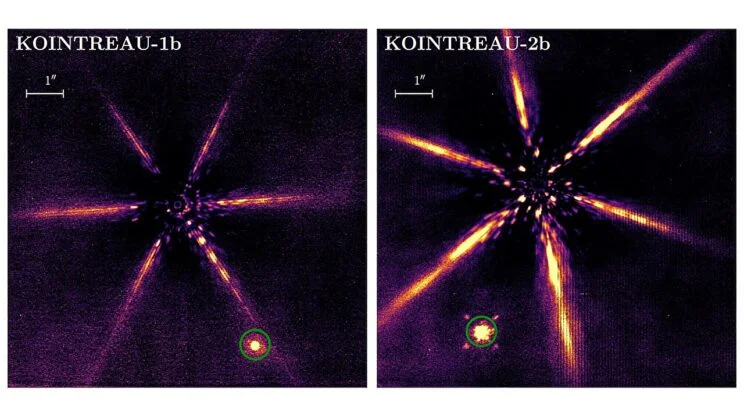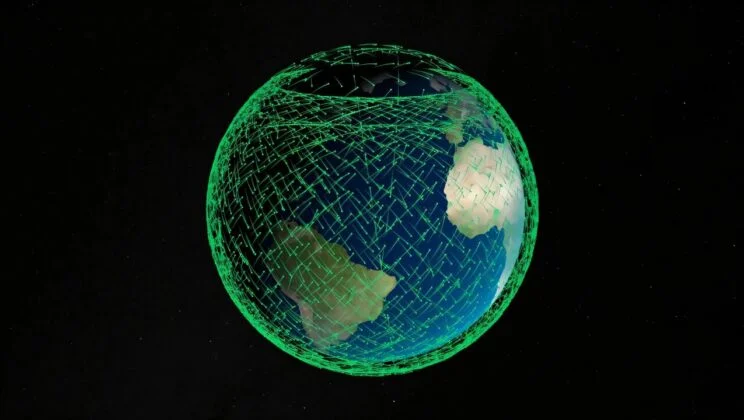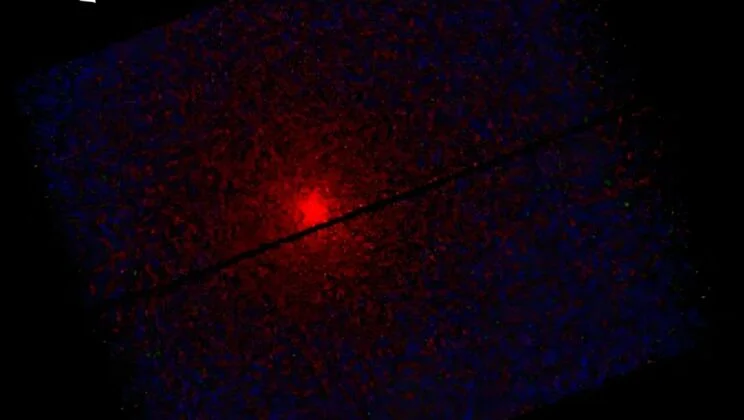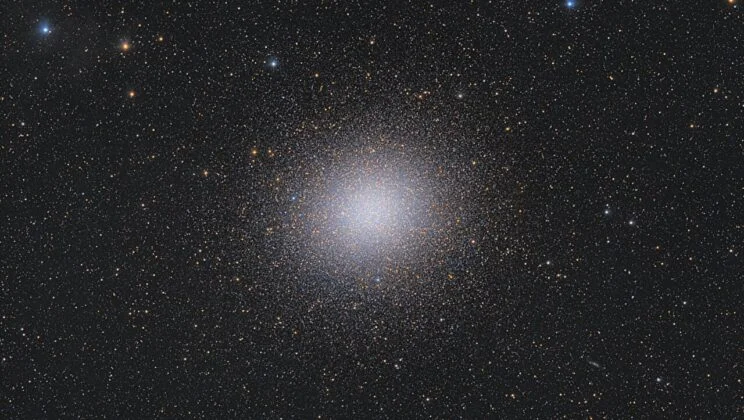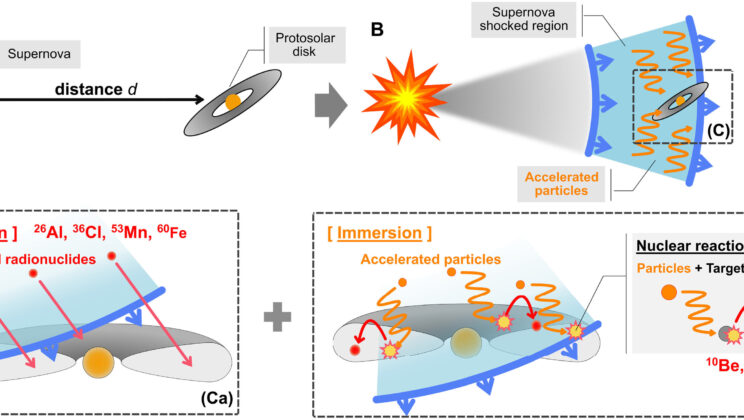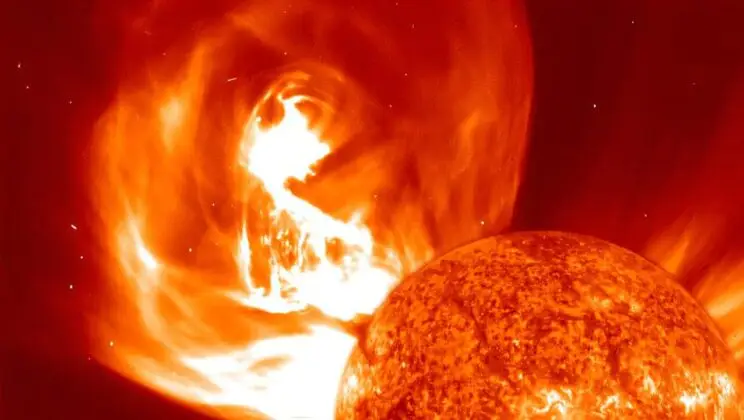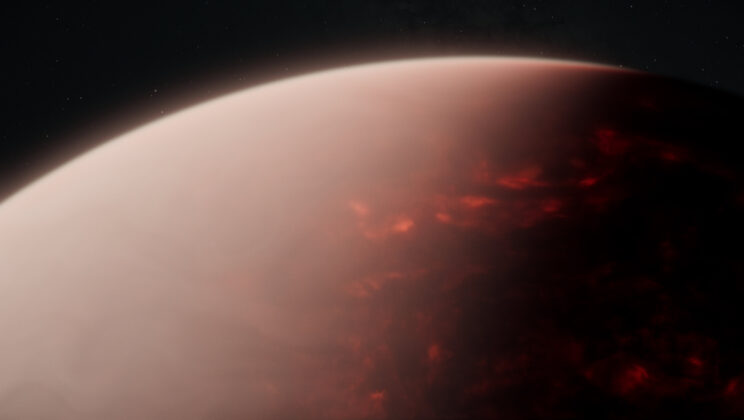From Earth, the region of space known as RXC J0032.1+1808 looks calm, almost unremarkable. It sits quietly in the nearby…
Category: Astronomy
Astronomers Found Three Hungry Black Holes Colliding in a Single Cosmic System
From 1.2 billion light-years away, a faint but persistent radio glow reached Earth, carrying with it a story no one…
Hubble Found the Biggest Planet-Building Disk Ever—and It’s Wildly One-Sided
When astronomers pointed NASA’s Hubble Space Telescope toward a young star system about 1,000 light-years from Earth, they expected something…
Scientists Crack Open Billion-Year-Old Salt—and Discover a Shockingly Breathable Ancient Earth
More than a billion years ago, sunlight shimmered across a shallow lake in what is now northern Ontario. The world…
This Supernova Didn’t Explode Loudly — and That’s Exactly Why Scientists Are Excited
On a June night in 2022, something subtle changed in a distant spiral galaxy. There was no flash bright enough…
This Glowing Cloud Isn’t a Celebration — It’s Thousands of Stars Being Born at Once
At first glance, the scene feels almost celebratory, as if the universe itself has strung lights across a dark sky.…
Astronomers Thought They Found a Planet — Then It Vanished and Something Even Stranger Appeared
The story began the way many astronomical discoveries do: with something that looked ordinary at first glance. A bright point…
The Milky Way Was Once a Cosmic Troublemaker, New Webb Study Reveals
For as long as humans have looked up at the night sky, the Milky Way has been both a familiar…
This Newly Found Stellar Cannibal Spins Every 2.86 Milliseconds and Refuses to Stay Visible
It began as a faint, restless signal buried in radio data from the southern sky. To most eyes, it might…
Saturn’s Rings Aren’t as Thin as We Thought — Cassini Found a Hidden Halo After Its Death
In 2017, the Cassini spacecraft began its final act. After years of orbiting Saturn, sending back breathtaking images and reshaping…
Astronomers Thought These Blue Flashes Were Supernovae — The Truth Turned Out to Be Far More Violent
For years, astronomers have been haunted by fleeting cosmic flashes that arrive without warning and vanish almost as quickly. These…
This Strange Object Orbits One of the Milky Way’s Oldest Stars—and It Isn’t a Planet or a Star
The story began quietly, with a faint, rhythmic dip in the light of a distant star. To most eyes, it…
Astronomers Nearly Lost Interest—Until This Cosmic Blast Did Something Unthinkable
The universe has a habit of surprising astronomers just when they think they know what to expect. In August 2025,…
Astronomers Finally Catch a Supermassive Black Hole Fleeing Its Galaxy After 50 Years of Predictions
For decades, supermassive black holes were thought to be prisoners of their galaxies. Enormous beyond comprehension, weighing hundreds of millions…
Astronomers Discover Planetary-Mass Object Orbiting a Tiny Star 690 AU Away
About 430 light years from Earth, a cold and shadowy stretch of space quietly gives birth to stars. This place,…
Scientists Warn Earth’s Satellite Network Could Collapse in Days—and the Sun Might Be the Trigger
High above Earth, far beyond the reach of weather and borders, thousands of satellites race around the planet in carefully…
An Alien Comet Just Glowed in X-Rays—and It May Be Hiding Gases We’ve Never Seen Before
On a quiet stretch of December space, something rare drifted past the instruments of human curiosity. Interstellar comet 3I/ATLAS, a…
Astronomers Found a Monster in the Milky Way’s Biggest Cluster, But It’s Eerily Silent
Omega Centauri hangs over the southern sky like a celestial city, immense and crowded, a dense sphere packed with roughly…
Earth’s Origin Story May Be Far More Common Than Anyone Thought
Long before Earth had oceans, continents, or even a solid surface, something violent and distant may have quietly shaped its…
This Interstellar Comet Disappeared Behind the Sun and Came Back Looking Different
For a time, Comet 3I/ATLAS was lost to us, hidden in the glare of the Sun as it swept through…
AI Just Cracked One of the Sun’s Biggest Mysteries
For centuries, humanity has watched the sun with a mix of awe and caution, knowing that this glowing sphere in…
This Hellish Planet Orbits in 11 Hours—and Somehow Still Has an Atmosphere
The James Webb Space Telescope has once again turned its unblinking eye toward the cosmos and found something that seems…
